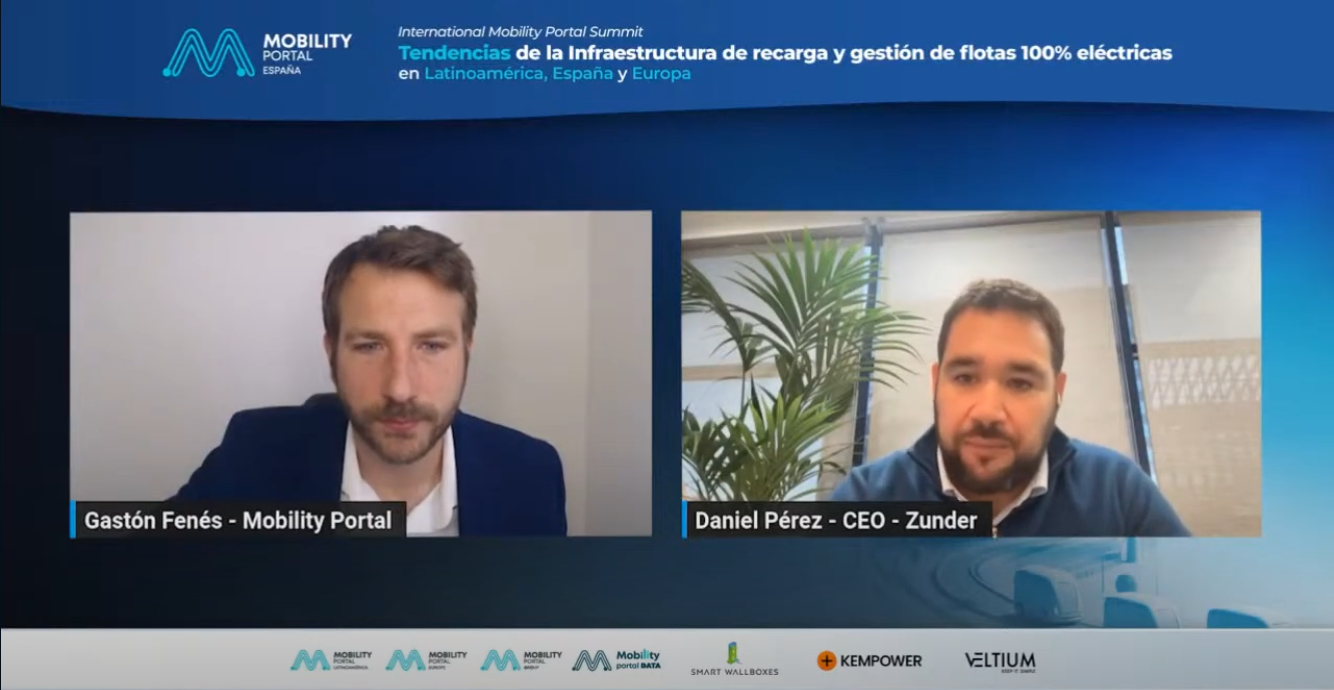The Spanish company Zunder, formerly EasyCharger, plans to have around 500 ultra-fast charging stations with over 4,000 points across Europe.
But, how will they achieve this goal?
In an exclusive interview with Mobility Portal España, the company’s CEO, Daniel Pérez, reveals the keys to the strategy that has positioned them as one of the leaders in the eMobility sector.
Below is the question and answer session from the latest portal event:
Let us set the stage for the audience… Where is Zunder focusing its efforts today?
At zunder we are in a fairly large expansion plan, not only in Spain, but also in other European countries, such as France, Portugal or Italy.
Everything is rising at a very good pace and the openings are helping.
Is there any particular market that stands out?
In France we are going to open several stations in the month of June and July.
They are large projects with a lot of power and we believe that they will be important.
But locally we are very happy, since in the end France is one of the natural paths if we start from Spain.
Can you reveal anything in advance?
In the Bayonne-Bordeaux area we are going to open four stations in the month of July.
It is a natural arrival of people who come from Europe to Spain or who are also leaving, so with this we facilitate this interconnection between the two countries.
And in specific numbers… Where does Zunder currently stand?
We currently have around 700 operational charging points and the goal is to finish with 1,000 this year. We will move on those figures.
There are still 300 installations remaining. Are you planning to make any changes to the rest?
We already made the changes we had to make last year and the year before. We are building chargers with around 400 kW power.
It is also important to analyse the local market. Is a significant leap anticipated?

This year Spain will make the leap in electromobility.
Why?
We have the advantage that we are behind the queue, in quotes, which is an advantage because we already see the experience of those who have done it ahead and we can take that information.
But isn’t the advantage in being the first?
Others see it that way, but it can’t always be that way.
Is that the only indicator?
No, we have also seen that when you go from 5.5 per cent of electric sales in all countries in Europe, what there was the following year was a two-fold increase in sales.
So in Spain last year we ended at that 5.5 per cent, which makes us confident that in 2024 we could end up around 10,11, 12 or even 15 per cent of 100 per cent electric registrations.
And once those numbers are captured, what will happen?
This will make the electric vehicle charging business even more attractive.
Now, does this have to do with user trust? Application of “ideal” incentives?
There are two points here and they are equally important.
One is the user’s trust and for me that is critical because in Spain the average vehicle sold is 32,000 euros, okay? But in Spain, a million vehicles are sold, costing much more than 32,000 euros.
So, why do those vehicles of more than 32,000 euros that can be electric perfectly, because people are spending 40 or 50,000 euros on a vehicle, not buy electric ones? For trust.
And why doesn’t the mass public, which is the 32 thousand euro car, buy an electric one? For the price.
What do we do with it?
We have to target both poles.
If it were only a matter of incentives, all vehicles sold above 35, 40 thousand euros would be electric.
But the reality is that it is not like that.
You have to earn trust, which you gain by seeing people circulating and that is why that psychological barrier of 5.5 per cent.
And then…
On the other hand, we have to get the price in line with the market.
How do we get the price to reach that ceiling?
We must ensure that the aid goes directly to the purchase, that you do not provide aid and that they pay you a year later.
Now, taking a different turn, what is Zunder’s core investment focus?
Taking away the urban environments where the power is more limited and logically you cannot put 400 kilowatt plazas within a city in the urban area, which is all the interurban areas that we build and the hubs that we are building do maintain that line.
For example, in Madrid we have several hubs under construction and they are all 400 kilowatt chargers.
Why?
We believe that it is power that allows us to provide a really good service to the user with a technology that is not only valid for today, but is valid in the long term.
In the end, when you set up a project of this type, it is not a facility that is built for one year or five, it is for the long term and you have to look for a technology that allows you to exploit it in the long term.
Where is the brand focusing its efforts for improvement?
What we are focused on is giving that experience to the user, so that when the user arrives at a Zunder station they have the best facilities and the best customer experience.
We worked a lot on improving our application, we had direct payment by credit card, which is the easiest environment for a user.
Anything else?
Right now we are doing quite a bit of development within our heavy vehicle stations.
We believe that the heavy vehicle is a reality, it is already arriving and we already have several loading regularly.

The role of cards is interesting. Do users directly take advantage of this payment system, or do they continue to use other alternatives?
We have a percentage that pays by credit card at the charger and we have been pioneers in offering this model.
The price is the same, the conditions do not change, so you can recharge it any way you prefer.
You can charge with interoperability if you come from another operator, you can pay by card or with the Zunder application.
The majority of users use the Zunder application, but there is a significant percentage who pay by card.
When it comes to finding locations, what have you learned over the years? Which are the best locations and which ones are not advisable?
Experience is very important and we have a very advanced internal analysis system.
With our analysis algorithms, we know where the good locations are and where they are not. But in the end, this is part of each company’s experience.








